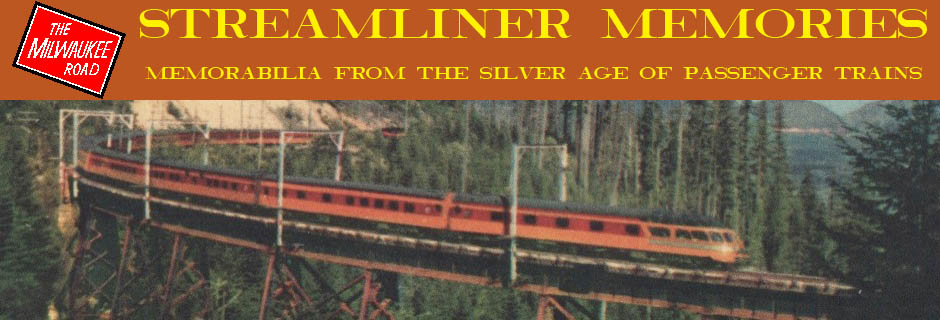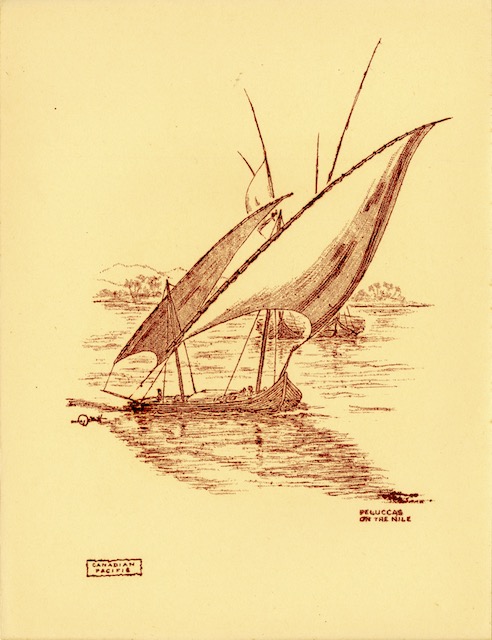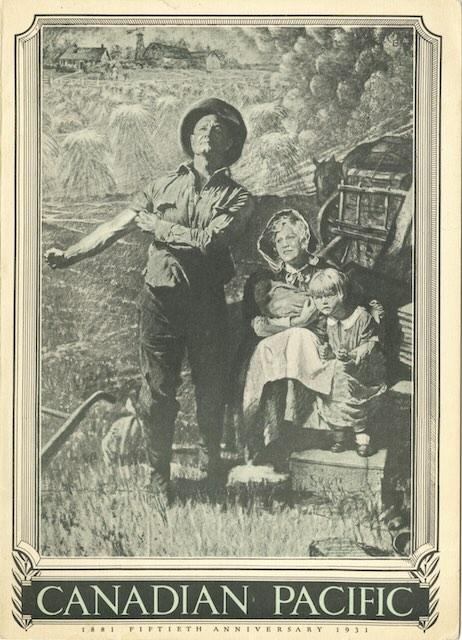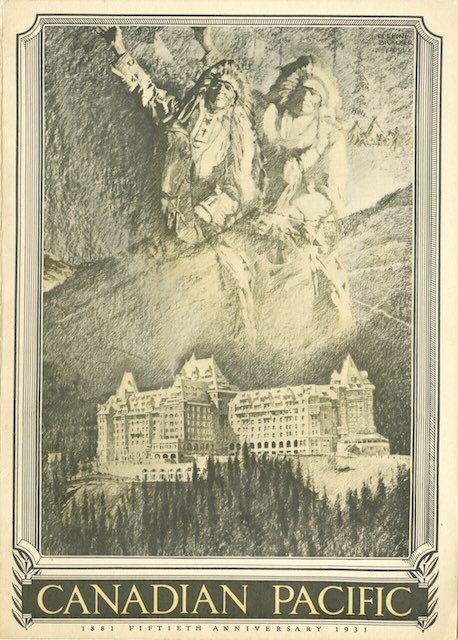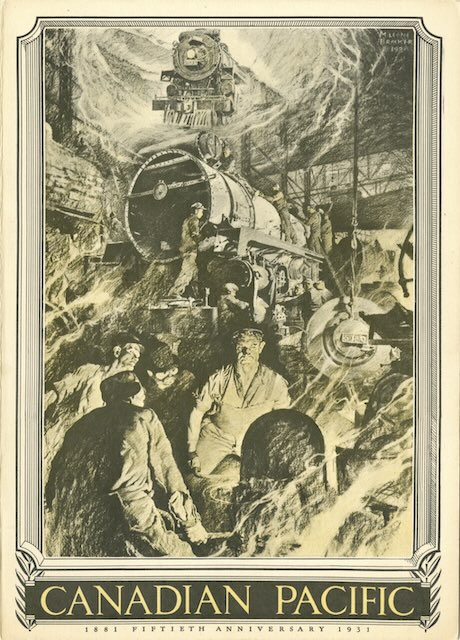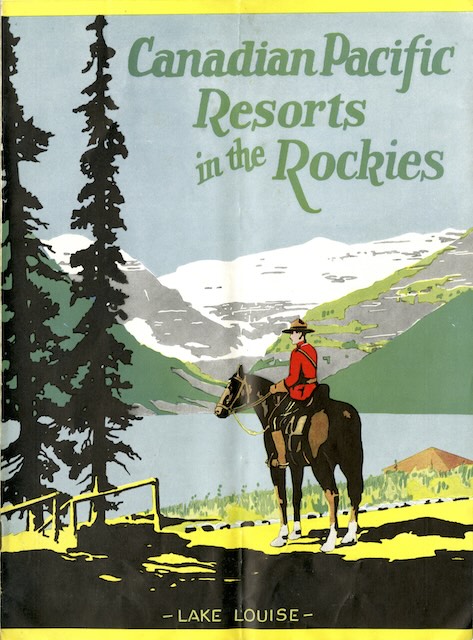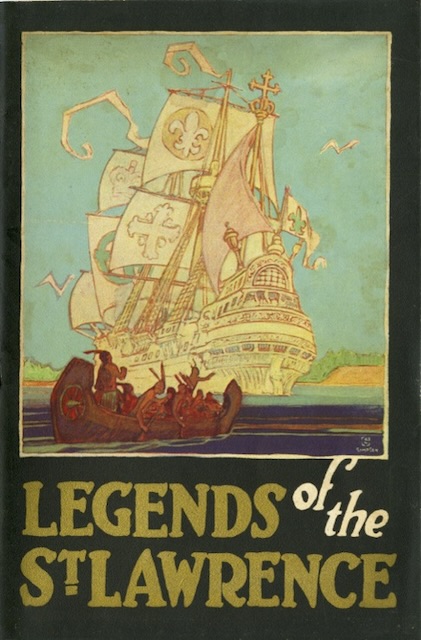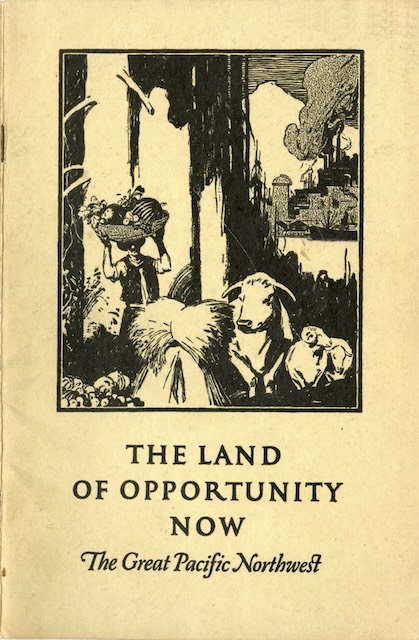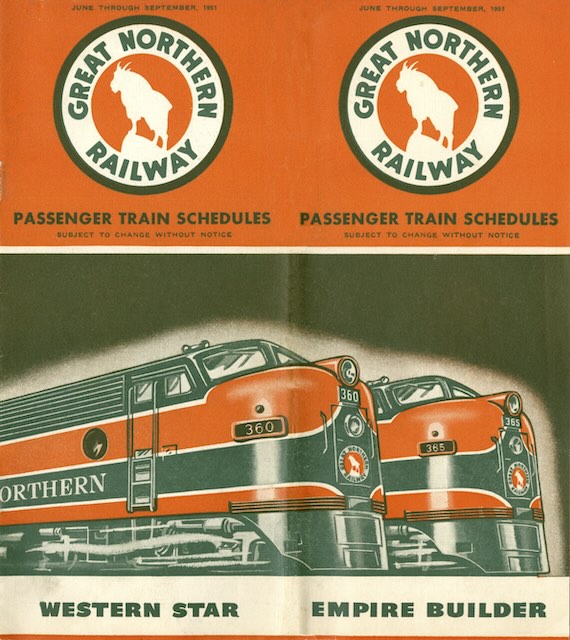We’ve seen this photograph before on a 1941 menu in what I call the Bodoni series (with vertical lines framing the photo) as well as on this 1947 menu in what I call the Center Portrait series, which also had Bodoni type but no lines. Today’s menu is from 1949 and is in what I call the Upper Left Color series because most of the menus in the series have blue, yellow, green, magenta, or rose backgrounds. This one is distinguished by having a grey background.
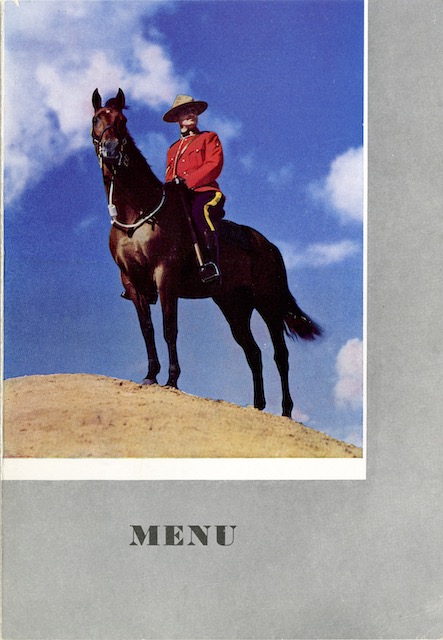 Click image to download a 1.3-MB PDF of this menu.
Click image to download a 1.3-MB PDF of this menu.
On most U.S. railroads, the distinctions between one menu series and another are quite obvious. But, as I noted on the Canadian Pacific menu series page, Canadian menu series seemed to evolve rather than leap from one series to another. Even within many of the series I have defined there are differences: for example, only a few of the Center Portrait series also use Bodoni type. In any case, this “Mounted” (the title of the text on the back) is clearly different enough from the other menus that used the same photo that I was glad to fill in this gap in my collection. Continue reading
